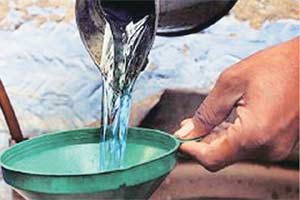In a move to curb pilferage of subsidised (PDS) kerosene, the government will launch direct benefit transfer (DBT) for disbursing the dole to beneficiaries in 38 districts across nine states starting August 1. In addition, the Narendra Modi government has urged the states to voluntarily cut their subsidised kerosene quotas and also offered to use the savings on this account to enhance allocation of funds to states.
The states where DBT for kerosene will be rolled out from August 1 include Madhya Pradesh, Chhattisgarh, Jharkhand, Punjab, Gujarat, Rajasthan, Himachal Pradesh and Maharashtra, a senior official told FE.
“The government initiative is aimed to bring structural reforms in kerosene distribution. The petroleum ministry doesn’t want to reduce the quota of any state, but the fuel has to reach the real beneficiary,” said the official.
[related-post]
In 2016-17, UP procured the highest volume of subsidised kerosene at 15.57 lakh kilo litre (KL), followed by West Bengal at 9.43 lakh KL, Bihar (7.96 lakh KL), Gujarat (6.57 lakh KL) and Maharashtra (6.26 lakh KL).
Karnataka is the first state which has opted for reducing its PDS kerosene quota to 90,000 KL against a sanction of 5.09 lakh KL. The state would gain Rs 70 crore from taking this step as additional central funds.
The Centre is of the view that with rapid growth in new domestic LPG connections even in the rural areas, lesser families are using kerosene as cooking fuel. Moreover, in the past two years of the current government, 8,960 villages have been electrified, meaning there would be less kerosene consumption for lighting. A similar number of villages are left unelectrified.
Prime Minister Modi, who met state chief ministers on Saturday at the inter-state council meeting, urged them to take voluntarily steps towards reducing kerosene consumption. Modi tried to woo the states, saying that if all the states reduce kerosene consumption by 25%, they gain Rs 1,600 crore in the current year as grant.
The states get about 87 lakh KL kerosene annually under PDS, 20 lakh KL more than required as per the National Sample Survey Organisation (NSSO) 2011-12 data. By aligning NSSO data to kerosene consumption and PDS demand, states could be allocated PDS kerosene depending on actual consumption, plugging leakages. However, the decision lies with the states and not the Centre.
Under a formula adopted last fiscal year, the government is paying Rs 12/litre subsidy on kerosene under the public distribution system (PDS) while under recoveries over and above that was largely borne by oil explorers — ONGC, Oil India and GAIL. Out of Rs 11,500-crore kerosene under-recovery 2015-16, the Centre’s subsidy share was about Rs 9,200 crore while upstream oil firms absorbed Rs 1,980 crore. Oil marketing companies bore about Rs 300 crore.
The budget has provided Rs 26,947 crore for fuel subsidy in the current fiscal: R19, 803 crore for LPG and R7,144 crore for kerosene.
